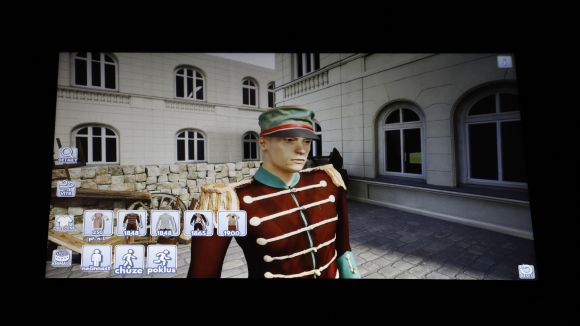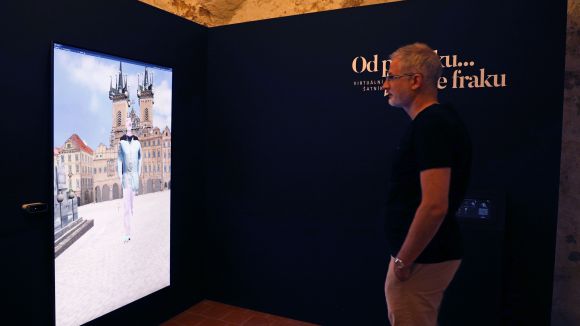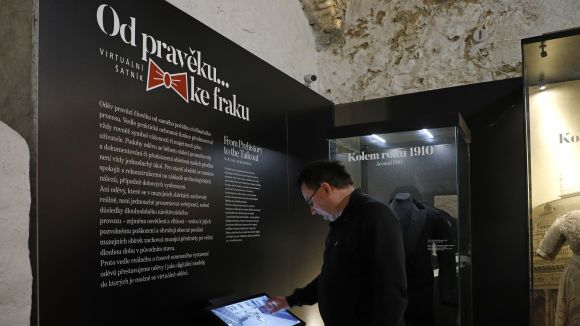Prague, 25 April 2023. The unique 3D presentation of digital models of textile collection objects was prepared by the CESNET association in cooperation with the Museum of the City of Prague, the Faculty of Electrical Engineering of the Czech Technical University and the improtech company. The models are on display in the information kiosk, which is part of the exhibition on the history of clothing, From Prehistory to Tailcoat. It is organised by the Museum of the City of Prague in the Golden Ring House in Prague.
The kiosk is connected to the Internet, which allows connection to a virtual server in the CESNET infrastructure where the 3D models are stored. CESNET’s Network Applications Technology Department, which digitised the objects, can continuously update the content and add more models.
“Digitizing textile objects in a way that captures the kinematic properties of the material is a challenging process. It starts with object capture, continues with digital data processing and culminates in the creation of a motion simulation. The resulting presentation makes it possible to see valuable historical garments in motion, which would not otherwise be possible. At the same time, it creates an exceptional form of documentation of objects for future researchers and visitors,” says Jiří Kubišta from the Department of Technology for Network Applications of CESNET.
CESNET has already created digital presentations for a number of other collection items for use in exhibitions. Last year, for example, it was a set of jewels from the 5th century, which are on display in the T.G.M. Museum in Rakovník, or a robot figure for the Karel Čapek Memorial in Strž u Dobříše. This year, the robot figure was complemented by previously unexhibited family heirlooms and objects related to Čapek’s doctor Leopold Fürth.
“The preparation of the latest exhibition, From Prehistory to Tailcoat, was the most challenging of these presentations. We had to capture the textile material faithfully, simulate the fabric and move it around in real time. Motion simulation of textile objects has thus far been performed either with artificial models with fewer polygons, for example, in computer games, or with collection objects for precomputed sequences. Real-time simulation with frame rate for smooth movement of textile collections is a new thing,” says Sven Ubik, Head of Technology for Network Applications at CESNET.
The association cooperates with talented students in its projects. Alena Žižková, a student of the Faculty of Information Technology of the Czech Technical University, participated in the work of the team that created the 3D models for the exhibition From Prehistory to Tailcoat exhibition, who focused on the digitisation of historical clothing in her bachelor thesis. Similarly, her colleague Oldřich Linhart digitised a robot figure for the Karel Čapek Memorial as part of his bachelor thesis.
3D visualisations allow visitors to view the objects from all sides and notice details that cannot otherwise be seen in the exhibits. Virtualisation contributes to the documentation of the condition of historical collections and serves scientists or researchers for their research activities.
The digitisation work was carried out as part of a joint project called the Virtual Digital Wardrobe, running from 2021-2023. The project was supported by the Technology Agency of the Czech Republic under the ÉTA programme (project number TL05000298).
The CESNET association was founded by various Czech universities and the Czech Academy of Sciences in 1996. Its objective is the operation and development of ICT services that comprise the national e-infrastructure for research, development and education e-INFRA CZ. Integral components of its activities include research and development in information and communications technology. CESNET is an active partner in numerous international research infrastructures, such as the Pan-European GÉANT research, development, and education network, the European Grid Infrastructure EGI.eu and the European infrastructure for open science EOSC. For more details, visit www.cesnet.cz and www.e-infra.cz.




